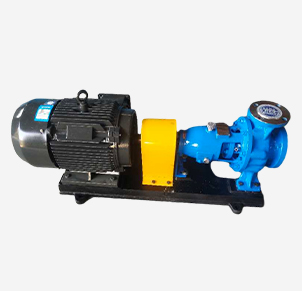English
- Afrikaans
- Albanian
- Amharic
- Arabic
- Armenian
- Azerbaijani
- Basque
- Belarusian
- Bengali
- Bosnian
- Bulgarian
- Catalan
- Cebuano
- Corsican
- Croatian
- Czech
- Danish
- Dutch
- English
- Esperanto
- Estonian
- Finnish
- French
- Frisian
- Galician
- Georgian
- German
- Greek
- Gujarati
- Haitian Creole
- hausa
- hawaiian
- Hebrew
- Hindi
- Miao
- Hungarian
- Icelandic
- igbo
- Indonesian
- irish
- Italian
- Japanese
- Javanese
- Kannada
- kazakh
- Khmer
- Rwandese
- Korean
- Kurdish
- Kyrgyz
- Lao
- Latin
- Latvian
- Lithuanian
- Luxembourgish
- Macedonian
- Malgashi
- Malay
- Malayalam
- Maltese
- Maori
- Marathi
- Mongolian
- Myanmar
- Nepali
- Norwegian
- Norwegian
- Occitan
- Pashto
- Persian
- Polish
- Portuguese
- Punjabi
- Romanian
- Russian
- Samoan
- Scottish Gaelic
- Serbian
- Sesotho
- Shona
- Sindhi
- Sinhala
- Slovak
- Slovenian
- Somali
- Spanish
- Sundanese
- Swahili
- Swedish
- Tagalog
- Tajik
- Tamil
- Tatar
- Telugu
- Thai
- Turkish
- Turkmen
- Ukrainian
- Urdu
- Uighur
- Uzbek
- Vietnamese
- Welsh
- Bantu
- Yiddish
- Yoruba
- Zulu
Telephone: +86 13120555503
Email: frank@cypump.com
Nov . 22, 2024 07:16 Back to list
septic tank pumps
Understanding Septic Tank Pumps Essential Components for Your Sewage System
Septic tank pumps play a crucial role in the functioning of a septic system. These systems are primarily used in rural and suburban areas where municipal sewage systems are not available. A septic system consists of a septic tank, drain field, and often, a pump for effective wastewater management. Understanding the purpose, types, and maintenance of septic tank pumps can help homeowners make informed decisions about their sewage systems, ensuring optimal performance and longevity.
The Role of Septic Tank Pumps
When wastewater from your home flows into the septic tank, the solids settle to the bottom, forming sludge, while fats, oils, and grease float to the top, creating scum. The middle layer, which is relatively clear liquid, is the effluent that needs to be treated before returning to the environment. If the effluent must be moved uphill or to a distance, a septic tank pump becomes necessary. These pumps help transport the effluent from the septic tank to the drain field or leach field, allowing for proper distribution and infiltration back into the soil.
In addition to transferring effluent, septic tank pumps also help maintain the functionality of the entire system by preventing water from backing up in the tank. This is especially important for homes built on a slope or where gravity alone cannot allow for proper drainage.
Types of Septic Tank Pumps
There are several types of septic tank pumps available, each designed for specific applications
1. Effluent Pumps These pumps are designed to handle the clear effluent from the septic tank. They operate quietly and efficiently, transferring processed wastewater to the drain field.
2. Sewage Pumps Unlike effluent pumps, sewage pumps can handle solids and are used in situations where wastewater contains larger particles. They are ideal for homes with garbage disposals or those using high volumes of water.
3. Guided Pumps These are typically used in systems that require precise leveling and control of the liquid discharged from the tank. They are equipped with float switches to automate the pumping cycle based on liquid levels.
septic tank pumps

4. Submersible Pumps Designed to be submerged in the liquid, submersible pumps are particularly effective in moving effluent and sewage efficiently. They are durable and often used in residential applications.
Maintenance of Septic Tank Pumps
Proper maintenance of septic tank pumps is vital for ensuring they operate as intended. Regular inspections and servicing can help prevent pump failure and costly repairs. Here are some essential maintenance tips
- Regular Pumping Have your septic tank pumped every 3-5 years to remove built-up sludge and prevent backup issues that may damage the pump.
- Inspect the Pump Check the pump annually for any signs of wear or malfunction. This includes inspecting the power supply, connections, and float switches.
- Beware of Wastes Do not dispose of non-biodegradable items down the toilet or sink, as they can clog the pump and damage the system.
- Check for Odors Unpleasant odors may indicate a problem with the septic tank or pump system. If you notice a smell, inspect the area or consult a professional immediately.
- Seek Professional Help When in doubt, hire a qualified septic service technician to perform inspections, maintenance, and repairs.
Conclusion
Understanding septic tank pumps is crucial for homeowners relying on septic systems. By knowing the functions of these pumps, the types available, and the importance of regular maintenance, you can help ensure your septic system operates efficiently and lasts longer. If you're considering installing or maintaining a septic system, consult with professionals to make the best choices for your home and environment.
-
ISG Series Vertical Pipeline Pump - Chi Yuan Pumps Co., LTD.|High Efficiency, Energy Saving, Low Noise
NewsJul.30,2025
-
ISG Series Vertical Pipeline Pump- Chi Yuan Pumps|High Efficiency&Low Noise
NewsJul.30,2025
-
ISG Series Vertical Pipeline Pump-Chi Yuan Pumps Co., LTD.|High Efficiency&Energy Conservation
NewsJul.30,2025
-
ISG Series Vertical Pipeline Pump - Chi Yuan Pumps Co., LTD.|Advanced Hydraulic Design&Energy-Efficient Solutions
NewsJul.30,2025
-
ISG Series Vertical Pipeline Pump - Chi Yuan Pumps Co., LTD.
NewsJul.30,2025
-
ISG Series Vertical Pipeline Pump - Chi Yuan Pumps Co., LTD.|energy-efficient fluid handling&industrial durability
NewsJul.30,2025










